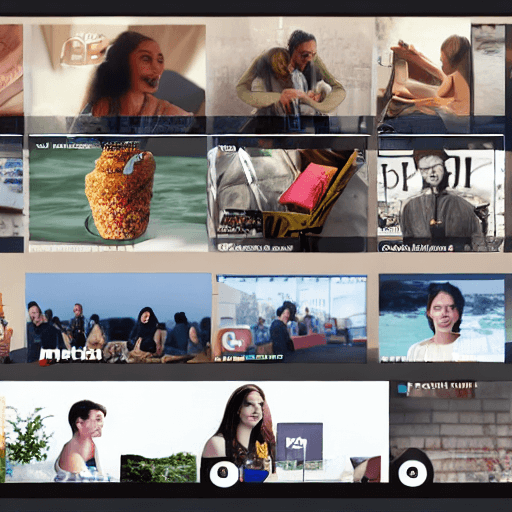

Meta’s advertising platform, encompassing Facebook and Instagram, offers unparalleled reach and targeting capabilities. However, simply running a standard ad campaign isn’t always enough to cut through the noise and truly resonate with your audience. Consumers are increasingly skeptical of traditional advertising, craving authenticity and genuine connection. This is where user-generated content (UGC) comes into play. Integrating UGC into your Meta ad campaigns can dramatically improve engagement, build brand trust, and ultimately, drive better ad performance. This comprehensive guide will delve into the strategies, best practices, and real-world examples of how to effectively leverage UGC within your Meta ad campaigns.
Traditionally, brands controlled every aspect of their advertising – the visuals, the messaging, and the overall narrative. While this control is still valuable, it’s becoming increasingly apparent that consumers respond more positively to content created by their peers. UGC taps into this inherent trust. When a customer shares a positive experience with a product or service, that message carries significantly more weight than a polished, professionally produced advertisement. Meta’s algorithms are also evolving to prioritize authentic content, making UGC a crucial element for maximizing ad reach and effectiveness.
UGC encompasses any content created by unpaid users – photos, videos, reviews, testimonials, stories, and even comments. It’s a diverse landscape, and understanding the different types of UGC you can leverage is the first step. Here’s a breakdown:
The key is to ensure the UGC aligns with your brand values and messaging. It should feel natural and genuine, not forced or contrived.
There are several ways to incorporate UGC into your Meta ad campaigns:
This is the most direct approach. You can directly use UGC as the visual component of your ads. For example, a fitness brand could use photos of customers showcasing their workout routines using the brand’s equipment. A travel company could feature user-submitted photos of stunning destinations visited with their services. This approach leverages the trust and credibility associated with real people.
Contests are a fantastic way to generate a large volume of UGC. Encourage users to submit photos or videos related to your brand in exchange for a prize. For example, a coffee shop could run a contest asking customers to share photos of their favorite coffee creations using the hashtag #MyCoffeeMoment. This not only generates content but also increases brand awareness and engagement.
Example: GoPro’s entire marketing strategy is built around UGC. They actively encourage users to submit their adventure videos, which are then featured on their social media channels and used in their advertising campaigns. This has created a massive library of compelling content and solidified GoPro’s position as the leading action camera brand.
Carousel ads are ideal for showcasing multiple pieces of UGC. You can create a carousel featuring a series of customer testimonials, product photos, or user-generated videos. This allows you to tell a more comprehensive story and highlight the diverse benefits of your product or service.
By incorporating testimonials or user-generated reviews into your lead generation ads, you can significantly increase conversion rates. Potential customers are more likely to trust a recommendation from a fellow user than a generic sales pitch.
Simply using UGC isn’t enough. You need to optimize it to maximize its impact on your ad performance. Here’s how:
Ensure your UGC aligns with your target audience’s interests and demographics. If you’re targeting millennials interested in sustainable fashion, select UGC featuring eco-friendly products and ethical brands.
Utilize relevant hashtags to increase the visibility of your UGC. Research popular hashtags within your industry and encourage users to use them when sharing their content. Create a branded hashtag to track UGC related to your brand.
Experiment with different types of UGC and ad creatives to see what resonates best with your audience. A/B test different visuals, captions, and calls to action to optimize your campaign performance.
Actively monitor your UGC and engage with the users who are sharing it. Respond to comments, thank users for their contributions, and amplify their content. This shows that you value your customers’ opinions and builds a stronger connection with your brand.
Using UGC comes with legal responsibilities. It’s crucial to understand and comply with relevant regulations:
Key Takeaway: Always obtain explicit permission from content creators before using their content in your ads. A simple agreement outlining usage rights is essential.
Leveraging user-generated content in Meta ad campaigns is a powerful strategy for building brand trust, driving engagement, and boosting conversions. By strategically incorporating UGC into your creative assets, running contests, and actively engaging with your audience, you can tap into the authentic voice of your customers and create a more compelling and effective advertising experience. Remember to prioritize legal compliance and ethical practices to ensure a positive and sustainable relationship with your users.
Final Thought: UGC isn’t just content; it’s a community. By fostering a strong relationship with your customers, you can unlock the full potential of this valuable resource.
Resources:
This comprehensive guide provides a detailed overview of how to effectively utilize user-generated content in your Meta advertising campaigns. By implementing these strategies and best practices, you can significantly enhance your advertising efforts and achieve your marketing goals.
Tags: Meta Ads, User-Generated Content, UGC, Facebook Ads, Instagram Ads, Ad Performance, Engagement, Brand Authenticity, Content Strategy, Campaign Optimization
0 Comments